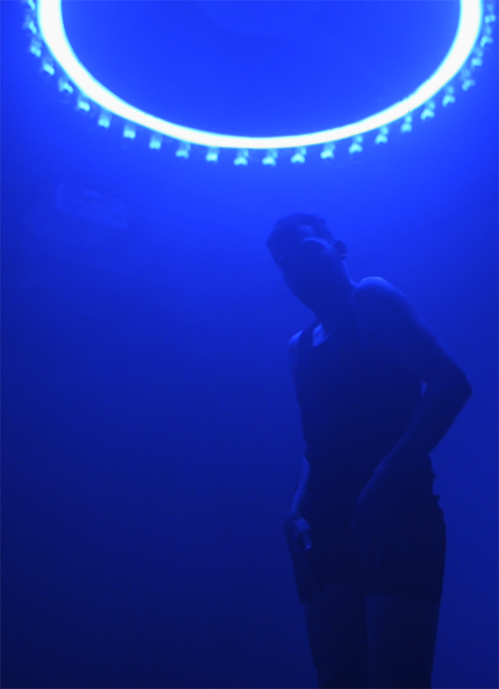Rising Awareness
Could one succeed in rising the level of awareness by sharpening one’s perception rather than repeating the vapid catchphrase, “raising awareness,” which has been coopted by an ever-growing money-raising industry that fails to improve our circumstances in a substantive way? Wearing a cocktail dress, I assembled a large kinetic structure made of wooden beams and ladders in front of the audience. I then walked and balanced on the twenty-foot wide structure at eight feet off the floor. Rising Awareness addresses my ongoing preoccupations about the physicality of experience, inhabiting the body, proprioception as the possible strongest sense of self, how spatial awareness correlates with overall awareness and self-awareness, how physicality enhances creativity, finding balance between gravity and groundlessness, a concept of happiness as the fullest expression of one’s particular cognitive potential, pushing boundaries, and the current irreverent politics of liability.



